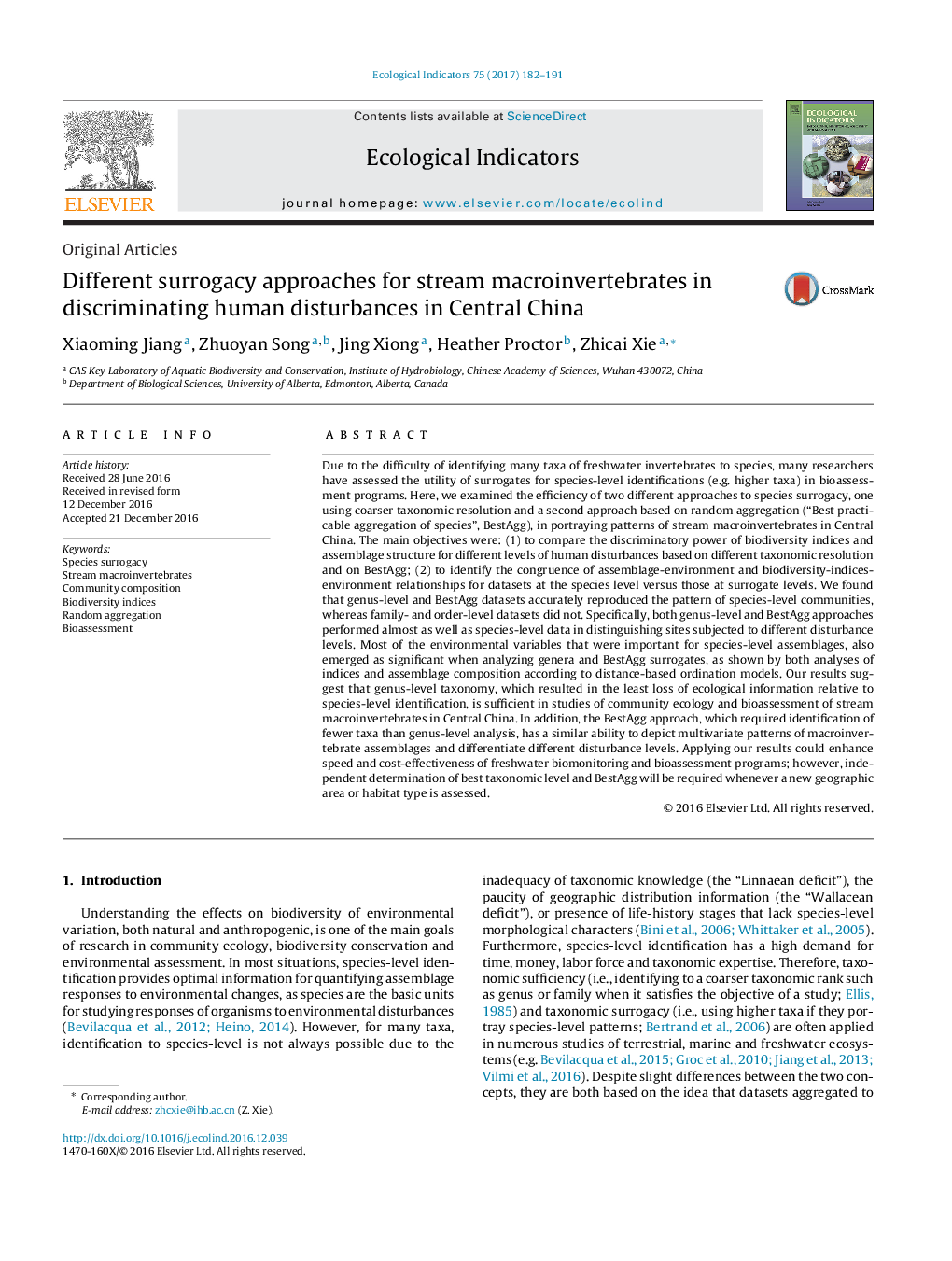| Article ID | Journal | Published Year | Pages | File Type |
|---|---|---|---|---|
| 5741809 | Ecological Indicators | 2017 | 10 Pages |
Abstract
Due to the difficulty of identifying many taxa of freshwater invertebrates to species, many researchers have assessed the utility of surrogates for species-level identifications (e.g. higher taxa) in bioassessment programs. Here, we examined the efficiency of two different approaches to species surrogacy, one using coarser taxonomic resolution and a second approach based on random aggregation (“Best practicable aggregation of species”, BestAgg), in portraying patterns of stream macroinvertebrates in Central China. The main objectives were: (1) to compare the discriminatory power of biodiversity indices and assemblage structure for different levels of human disturbances based on different taxonomic resolution and on BestAgg; (2) to identify the congruence of assemblage-environment and biodiversity-indices-environment relationships for datasets at the species level versus those at surrogate levels. We found that genus-level and BestAgg datasets accurately reproduced the pattern of species-level communities, whereas family- and order-level datasets did not. Specifically, both genus-level and BestAgg approaches performed almost as well as species-level data in distinguishing sites subjected to different disturbance levels. Most of the environmental variables that were important for species-level assemblages, also emerged as significant when analyzing genera and BestAgg surrogates, as shown by both analyses of indices and assemblage composition according to distance-based ordination models. Our results suggest that genus-level taxonomy, which resulted in the least loss of ecological information relative to species-level identification, is sufficient in studies of community ecology and bioassessment of stream macroinvertebrates in Central China. In addition, the BestAgg approach, which required identification of fewer taxa than genus-level analysis, has a similar ability to depict multivariate patterns of macroinvertebrate assemblages and differentiate different disturbance levels. Applying our results could enhance speed and cost-effectiveness of freshwater biomonitoring and bioassessment programs; however, independent determination of best taxonomic level and BestAgg will be required whenever a new geographic area or habitat type is assessed.
Related Topics
Life Sciences
Agricultural and Biological Sciences
Ecology, Evolution, Behavior and Systematics
Authors
Xiaoming Jiang, Zhuoyan Song, Jing Xiong, Heather Proctor, Zhicai Xie,
